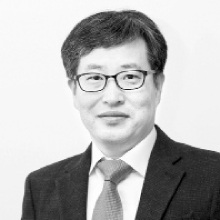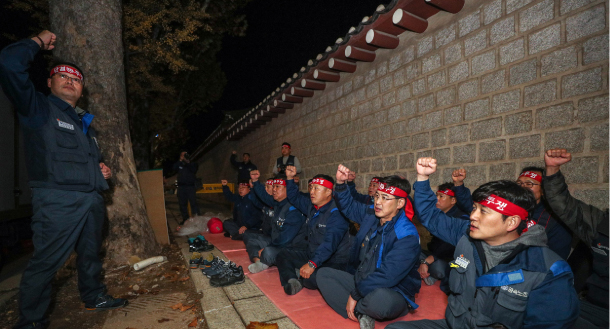The GM conundrum

The author is an editorial writer at the JoongAng Ilbo.
There are renewed doubts about the fate over the long term of GM Korea after the U.S. headquarters of the local unit decided to separate the R&D division from the car manufacturing.
“General Motors (GM) eventually will pack up and leave,” said a researcher from a state think tank that was involved in the negotiation between GM and the Korean government over a rescue package for the troubled Korean operation earlier this year. He, too, believes the spinoff was part of a streamlining scheme. The Detroit-based automaker is expected to persistently wrangle with the host government over new funding with the threat of cutting back the workforce before it finally pulls out, he said.
His skepticism is not groundless. Since GM pulled itself back from the brink of collapse following the financial crisis 10 years ago, its primary focus has been survival and profit, not expansion. GM CEO Mary Barra, who has been in charge of the automaker’s turnaround since 2014, poses the same question at every investment meeting. “Can we make a profit? Is this the best place to put our money?” Even if it cannot convince its top boss back in Detroit, the money-losing Korean unit won’t be able to persuade institutional players on Wall Street, which own a combined 76 percent of GM.
GM Korea should be thankful it has an R&D and design section the American automaker thinks highly of. Output has been shriveling, and GM Korea’s losses over the last year have piled up to nearly 1 trillion won ($879 million). “GM chose to stay in Korea not just because of the government support,” said Kwon Soon-won, a business professor at Sookmyung Women’s University. “It rates highly the supplies of quality and price-competitive parts and R&D capacity in Korea.” Sadly, those merits have been discounted by the negatives of a militant union and poor productivity, he added.
GM headquarters values Korea as a prime R&D base for new cars. GM Korea has a rare testing driving range in an urban district of Cheongna, south of Incheon and west of Seoul. The 500,000-square-meter (123-acre) site, which the city of Incheon lends it for free, has 36 driving courses and high-tech labs. The labs can test cars in temperatures, humidity and sunlight from all four seasons and are staffed by 500-plus researchers. The Korean labs are the best in GM’s network in achieving given tasks. Wages are a problem for the factory lines, but the R&D staff outperforms their pay.

Members of GM labor union begin to stage a sit-in protest in front of the Blue House Wednesday night. [NEWS1]
Little can stop GM’s spinoff. The Korea Development Bank (KDB), the second-largest shareholder with a 17 percent stake, has stayed ambiguous because it knows there is not much it can do. Thinking outside of the box is one way to solve the problem. The strength of GM Korea’s R&D should be reinforced to the extent that Korean workers can demand their U.S. owner use the resource to enhance the competitiveness of products made from Korea. Global automakers all have eyes on autonomous vehicles and future mobility. GM has embarked on a project to launch a robot taxi for ride-hailing services. GM won’t be able to easily exit from Korea if its future-growth technology is bound in Korea. It was premature for Incheon to threaten to take back the driving course from GM Korea unless it was meant to encourage more R&D investment in Korea.
To the Korean government, the communities where GM Korea plants are based and the union, GM management may seem cold-blooded. But emotions cannot solve a business problem. The government and politicians must muster wisdom to find a practical solution even at the cost of losing votes. The question is whether they have the stuff.
JoongAng Ilbo, Oct. 26, Page 34










with the Korea JoongAng Daily
To write comments, please log in to one of the accounts.
Standards Board Policy (0/250자)